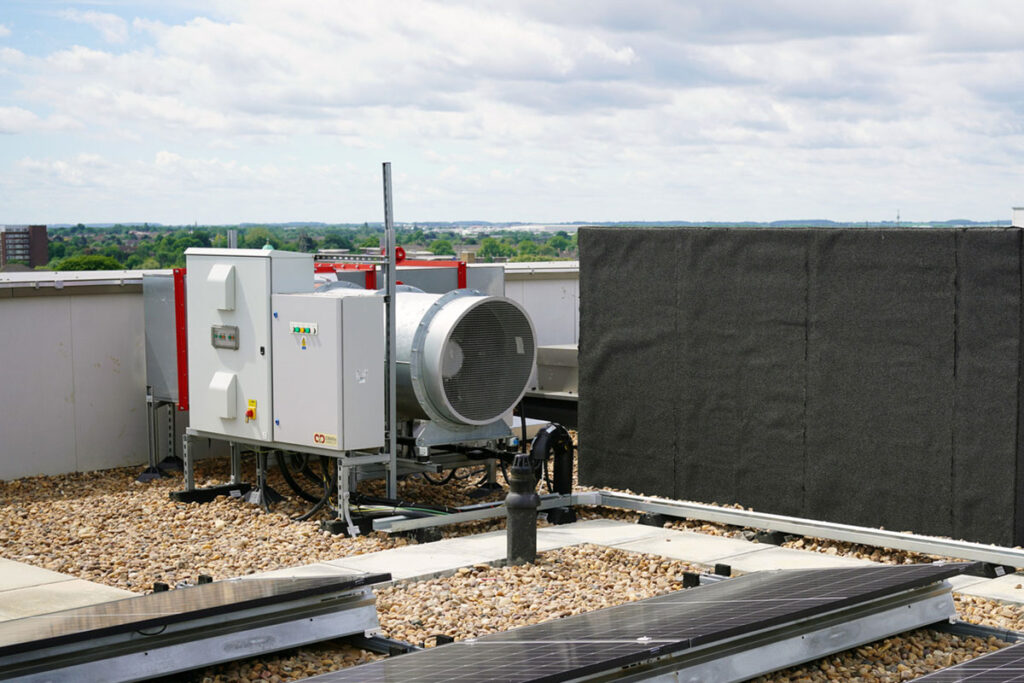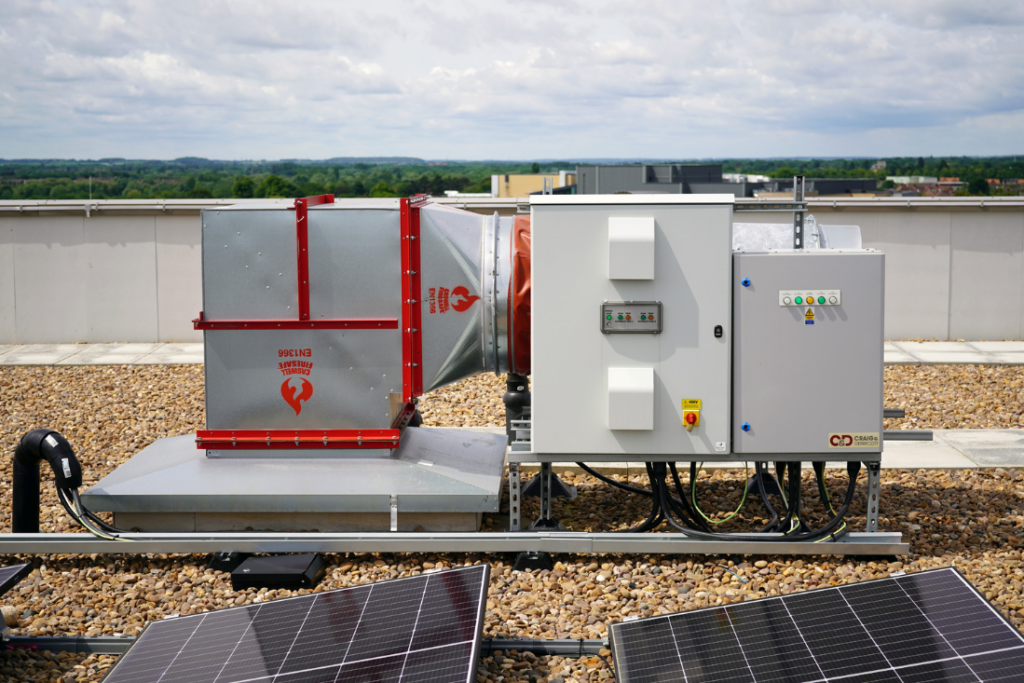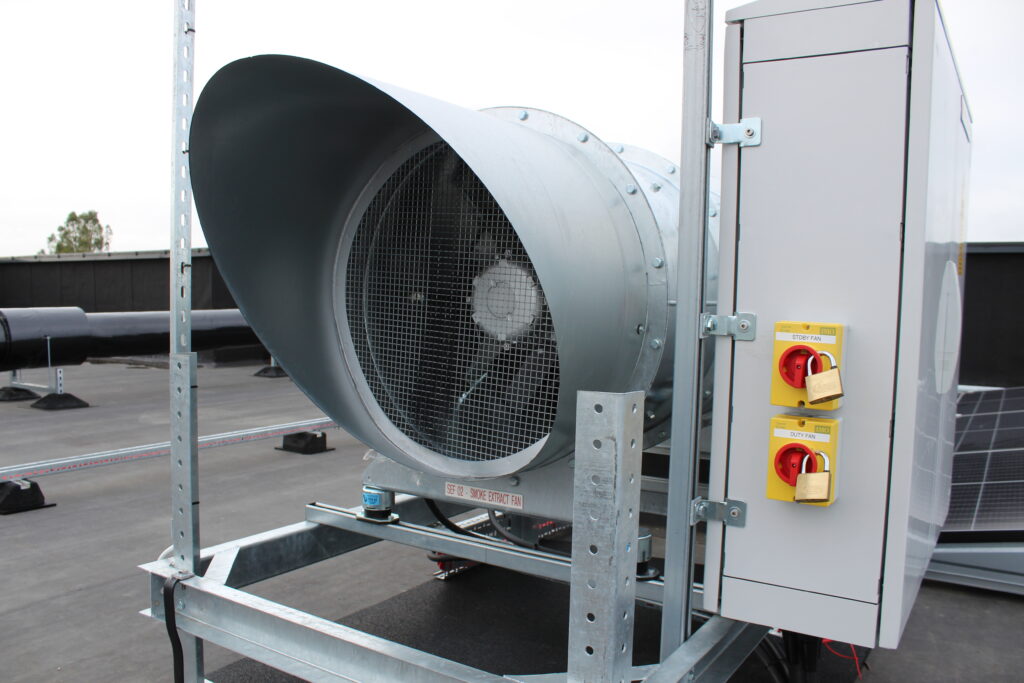Having been appointed to a wide range of commercial projects in our history, we’re well aware of our clients’ key objectives – namely maximising space, maintaining key design elements and minimising construction costs, all while providing the most appropriate level of fire safety for a property and its occupants.
By taking a considered, engineered approach, it’s possible to satisfy all of these requirements, while providing a smoke ventilation solution that is sensitive to the building’s layout and structure.
Under Approved Document B (ADB),the section of the Building Regulations 2010 that covers the requirements of fire safety, any office in which the top floor is more than 11m above ground level requires two staircases to provide suitable escape in the event of fire.
ADB also calls for buildings that feature a top height of 18m or more to include a firefighting shaft with a firefighting lift and ventilated lobby. The simplest option to ventilate the firefighting lobby consists of an external 1.5m2 window which can be manually opened by the attending fire service to allow the extraction of smoke from the lobby.
In cases where the building’s structure means that the firefighting shaft does not include an external wall, natural smoke shafts can provide ventilation, with a 3m² shaft required, accompanied by 1.5m² openings onto each of the building’s floors.
By taking an engineered approach to fire design it’s possible to make significant cost and space savings, for instance by removing secondary staircases from the building’s design. As a second staircase may significantly intrude on the building’s floor plate, its removal can make a project more commercially viable for the client, making it important to consider this alternative method.
A further space-saving technique is the inclusion of pressurisation systems. In the case of properties over 11m in height, such systems are an industry recognised solution for means of escape purposes only, however, where the building stands at over 18m in height the pressurisation system must be enhanced to also aid in firefighting operations, protecting the firefighting shaft from smoke ingress.
As the design requirements for pressurisation systems are outlined in BS EN 12101 Part 6, their use can easily be justified through the submission of calculations which demonstrate their effectiveness.
While the inclusion of pressurisation systems within a design can allow clients to gain additional floor area than if a natural system was used, they also have higher initial costs and are more complicated to install and commission, meaning that the cost of initial installation needs to be weighed against the commercial benefit from increased area gain.
An alternative solution is a mechanical ventilation system. These operate similarly to natural smoke shafts and protect the property’s staircase, but are less costly and generally require less equipment than pressurisation systems, saving on installation costs and generating more revenue by maximising available space.
However, as the use of mechanical ventilation systems is an engineered, rather than code compliant solution, there is greater risk involved. Each installation must be considered on an individual project basis, with computational fluid dynamics (CFD) modelling analysis being submitted to building control with a supporting report to justify the mechanical smoke ventilation system design.
Despite this, mechanical systems offer both the aforementioned space saving benefits without the complicated installation and expensive system costs associated with pressurisation systems, making mechanical smoke venting one of the most popular choices for commercial projects where space is at a premium.
By involving an experienced smoke ventilation contractor from the early stages of a commercial project, developers can ensure that both their client’s objectives will be met, and that the building is provided with the most appropriate fire safety systems possible.


